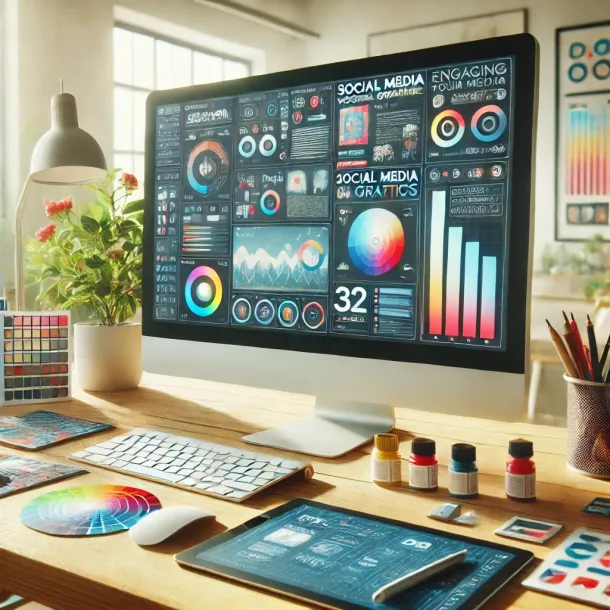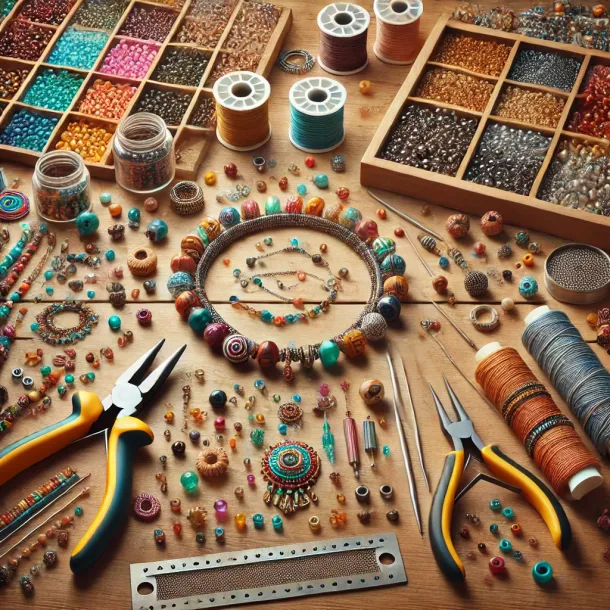The Future of Design: Trends to Watch in the Next Decade
The Future of Design: Trends to Watch in the Next Decade
The world of design is constantly evolving, driven by technological advancements, cultural shifts, and changing consumer expectations. As we look ahead to the next decade, it’s clear that the design landscape will continue to transform, with new trends emerging that will shape how we create, communicate, and interact with the world around us. This article explores the key design trends that are set to define the future, providing insights into what designers should watch for and how they can prepare for the changes to come.
1. The Rise of AI-Powered Design
Artificial Intelligence (AI) is poised to revolutionize the design industry in the coming years. As AI technologies become more sophisticated, they will play an increasingly important role in automating routine design tasks, enhancing creativity, and personalizing user experiences.
AI-Driven Automation
AI-powered tools are already being used to automate repetitive tasks, such as resizing images, generating layouts, and even writing code. In the future, these tools will become even more advanced, allowing designers to focus on the creative aspects of their work while AI handles the more mundane tasks. This will lead to increased efficiency and the ability to produce high-quality work at a faster pace.
Generative Design
Generative design, a process where designers set parameters and allow AI to generate multiple design options, is another trend to watch. This approach enables designers to explore a wider range of possibilities and quickly iterate on ideas. As generative design tools continue to improve, they will become an essential part of the designer’s toolkit, helping to push the boundaries of creativity.
Personalization and Customization
AI will also play a key role in personalization and customization, enabling designers to create tailored experiences for individual users. By analyzing data on user behavior and preferences, AI can generate personalized content, layouts, and interfaces that adapt to each user’s needs. This trend will lead to more engaging and relevant user experiences, making design more effective and impactful.
2. Sustainability and Ethical Design
As concerns about the environment and social responsibility grow, sustainability and ethical design will become increasingly important in the next decade. Designers will need to consider the environmental impact of their work and make conscious choices that promote sustainability and social good.
Eco-Friendly Materials and Practices
The use of eco-friendly materials and sustainable design practices will become more prevalent as designers seek to reduce their carbon footprint. This includes choosing materials that are recyclable or biodegradable, minimizing waste during production, and designing products with a longer lifespan. Sustainable design will also extend to digital products, with a focus on reducing energy consumption and optimizing performance to lower environmental impact.
Inclusive and Accessible Design
Ethical design also means creating products and experiences that are inclusive and accessible to all users, regardless of their abilities or backgrounds. In the future, designers will need to prioritize accessibility from the outset, ensuring that their work is usable by everyone. This includes following accessibility guidelines, incorporating inclusive design principles, and testing products with diverse user groups.
Design for Social Impact
Designers will increasingly be called upon to address social issues and create work that has a positive impact on society. This could involve designing products that promote health and well-being, developing tools that empower underserved communities, or creating campaigns that raise awareness of important social causes. As consumers become more conscious of the ethical implications of their purchases, socially responsible design will become a key differentiator for brands.
3. The Integration of Augmented Reality (AR) and Virtual Reality (VR)
Augmented Reality (AR) and Virtual Reality (VR) are rapidly changing the way we interact with digital content, and their influence on design will only grow in the coming years. These technologies offer new opportunities for immersive and interactive experiences, pushing the boundaries of what’s possible in design.
Immersive User Experiences
AR and VR enable designers to create fully immersive experiences that go beyond the limitations of traditional screen-based design. In the future, we can expect to see more websites, apps, and digital products that incorporate AR and VR elements, allowing users to interact with content in new and engaging ways. For example, AR could be used to overlay digital information onto the physical world, while VR could transport users to entirely virtual environments.
Product Visualization and Prototyping
AR and VR will also play a significant role in product visualization and prototyping. Designers will be able to create virtual prototypes that users can interact with in a three-dimensional space, allowing for more accurate testing and iteration before physical production begins. This will lead to more efficient design processes and better-quality products.
Enhanced Collaboration
The integration of AR and VR will also transform the way designers collaborate with clients and team members. Virtual design studios, where teams can work together in a shared digital space, will become more common, breaking down geographical barriers and enabling real-time collaboration. This will lead to more dynamic and flexible design workflows, making it easier to bring innovative ideas to life.
4. The Continued Evolution of Minimalism
Minimalism has been a dominant trend in design for years, and it shows no signs of slowing down. However, the next decade will see minimalism evolve, with new approaches and interpretations emerging that push the boundaries of simplicity and functionality.
Maximal Minimalism
One emerging trend is “maximal minimalism,” where designers combine minimalist principles with bold and expressive elements. This approach maintains the clean lines and simplicity of minimalism but incorporates striking visuals, vibrant colors, and unique typography to create a more dynamic and engaging aesthetic. Maximal minimalism allows designers to make a strong visual statement while still adhering to the core principles of simplicity and clarity.
Sustainable Minimalism
As sustainability becomes more important, we will also see the rise of sustainable minimalism. This approach focuses on reducing waste and promoting eco-friendly practices by creating designs that are both simple and durable. Sustainable minimalism encourages the use of high-quality, long-lasting materials and avoids unnecessary embellishments that can lead to overconsumption.
Functional Minimalism
Functional minimalism will continue to be a key focus, with an emphasis on creating designs that are not only visually appealing but also highly functional. This approach prioritizes user experience, ensuring that every element serves a purpose and enhances usability. Functional minimalism is particularly relevant in digital design, where the goal is to create intuitive interfaces that are easy to navigate and provide a seamless experience for users.
5. The Growth of No-Code and Low-Code Tools
No-code and low-code tools are democratizing design by making it easier for people with little or no technical expertise to create digital products. These tools allow designers to build websites, apps, and other digital experiences without writing code, lowering the barriers to entry and enabling more people to participate in the design process.
Empowering Designers
No-code and low-code platforms empower designers to take control of the entire design process, from concept to execution. This reduces the reliance on developers and allows for faster iteration and experimentation. As these tools become more powerful and sophisticated, they will enable designers to create increasingly complex and customized digital experiences without needing to learn how to code.
Collaborative Workflows
These tools also facilitate more collaborative workflows between designers, developers, and other stakeholders. By providing a visual interface for building digital products, no-code and low-code platforms make it easier for teams to work together and communicate ideas. This leads to more efficient project management and a smoother design process.
Innovation and Experimentation
The accessibility of no-code and low-code tools will also drive innovation and experimentation in design. As more people are able to create and test their ideas, we can expect to see a surge in creative and unconventional digital products. This democratization of design will lead to a more diverse and dynamic design landscape, where new voices and perspectives can flourish.
6. The Emphasis on Data-Driven Design
Data-driven design is becoming increasingly important as businesses and designers recognize the value of using data to inform design decisions. In the next decade, data-driven design will continue to grow, with designers leveraging data analytics, user research, and performance metrics to create more effective and user-centric products.
Personalization Through Data
One of the key benefits of data-driven design is the ability to personalize user experiences. By analyzing user data, designers can create customized content, interfaces, and interactions that cater to individual preferences and behaviors. This level of personalization leads to more engaging and relevant experiences, increasing user satisfaction and loyalty.
Continuous Improvement
Data-driven design also supports continuous improvement by providing insights into how users interact with a product. By monitoring performance metrics and user feedback, designers can identify areas for improvement and make data-informed changes to optimize the user experience. This iterative approach ensures that digital products remain relevant and effective over time.
Ethical Considerations
As data-driven design becomes more prevalent, ethical considerations will become increasingly important. Designers will need to be mindful of privacy concerns, data security, and the potential for bias in data analysis. Ethical design practices will be essential in ensuring that data is used responsibly and that user trust is maintained.
7. The Influence of Global and Cultural Diversity
The next decade will see a greater emphasis on global and cultural diversity in design. As the world becomes more interconnected, designers will need to consider the cultural context and diversity of their audiences, creating work that resonates with people from different backgrounds and perspectives.
Culturally-Inclusive Design
Culturally-inclusive design involves creating products and experiences that are sensitive to the cultural norms, values, and preferences of diverse user groups. This requires a deep understanding of different cultures and the ability to design in a way that is respectful and inclusive. As businesses expand into new markets and reach global audiences, culturally-inclusive design will become increasingly important.
Diverse Design Teams
To achieve culturally-inclusive design, businesses will need to prioritize diversity within their design teams. Diverse teams bring a range of perspectives, experiences, and ideas, leading to more innovative and inclusive design solutions. In the future, we can expect to see more emphasis on diversity and inclusion in hiring practices, team collaboration, and design education.
Conclusion
The future of design is full of exciting possibilities, with new trends and technologies set to shape the industry in the coming decade. From AI-powered tools and immersive experiences to sustainable practices and culturally-inclusive design, the next decade will bring significant changes that will challenge designers to innovate and adapt.
As we move forward, it’s essential for designers to stay informed about these trends and continue to develop their skills and knowledge. By embracing change and remaining open to new ideas, designers can create work that not only meets the needs of today but also anticipates the demands of the future.


